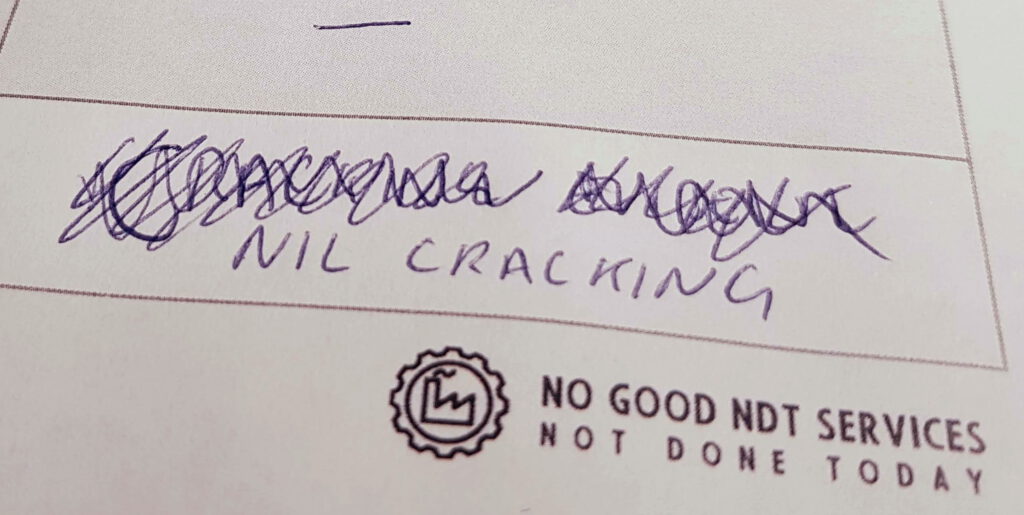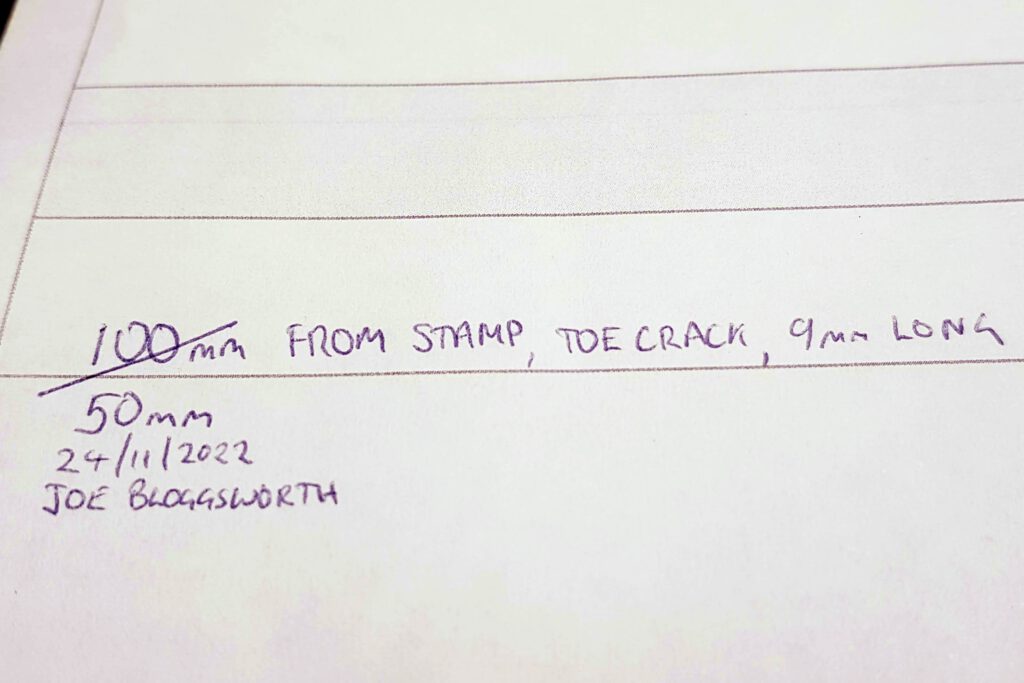In NDT, credible, timely documentation is just as important as the test itself. But what happens when you make a documentation error, such as entering information in the wrong field? Proper procedures must be followed in handling these situations.
First, learn and follow your facility’s procedure for changing errors. Second, learn about industry requirements for correcting errors such as NATA and ISO. Finally, use the best practices described in this chapter.
Facility requirements
Depending on the facility, there may or may not have a documented process for making corrections to documents. In this case, follow the best practices detailed in this chapter.
NATA and ISO requirements
Most facilities operate following ISO 17025 or ISO 17020. These documents detail the requirements for laboratories and inspection bodies to operate competently. In Australia, the National Association of Testing Authorities (NATA) accredits organisations to perform inspection and testing services. This accreditation is based on the organisations meeting the requirements of ISO 17025 or ISO 17020.
Part of these NATA and ISO requirements detail how test records are both made and amended. It’s important that all information recorded can be tracked to the person who made the change, and when the change was made. This traceability can be achieved by striking out the error with a single line, writing the correct data, and adding the date and your name.
Best correction practices
Correcting electronic documentation
If your facility uses electronic documentation, strictly adhere to guidelines and procedures for correcting documentation errors in that format.
Correcting handwritten documentation
Don’t obliterate the mistaken entry. Never use correction fluid, black markers, erasures, tape, or scratch-out techniques that hide a documentation error. When data has been obliterated, a lawyer could argue that you had something to ”cover-up.” Even one such occurrence of obliteration would cast doubt on the entire thing as a legitimate legal record.
Make the correction in a way that preserves the original entry. Draw a single line through the erroneous entry, and write the date and your name. If your name is already used in other areas of the document, initials can be acceptable.
Identify the reason for the correction. Unless the correction is due to a simple error (for example, writing in the wrong box), include the rationale in your notation.
Never alter words or numbers after you’ve written them. For example. don’t try to turn a 1 into a 7. In the event of a serious investigation, handwriting experts can and will testify to the alteration, giving an impression of fraud.
What’s the big deal?
Correcting documentation properly may seem like an undue burden or excessive; in day-to-day operations, it’s easy to forget that the outcome of a technician’s results has a direct impact on the safety of others, and sometimes these outcomes result in death. When performing NDT, ask yourself: would I be comfortable explaining my actions in front of a coroner’s inquiry?
Kuzer Technical can assist your quality, compliance and technical requirements. Get in touch for a discussion on how we can help. 1300 199 086 or info@kuzer.com


